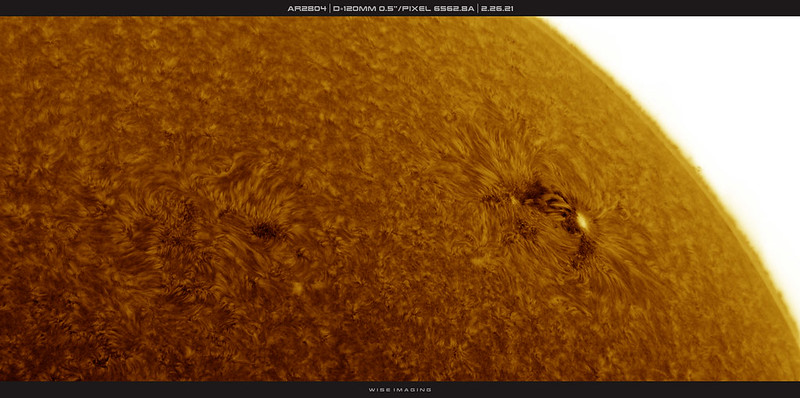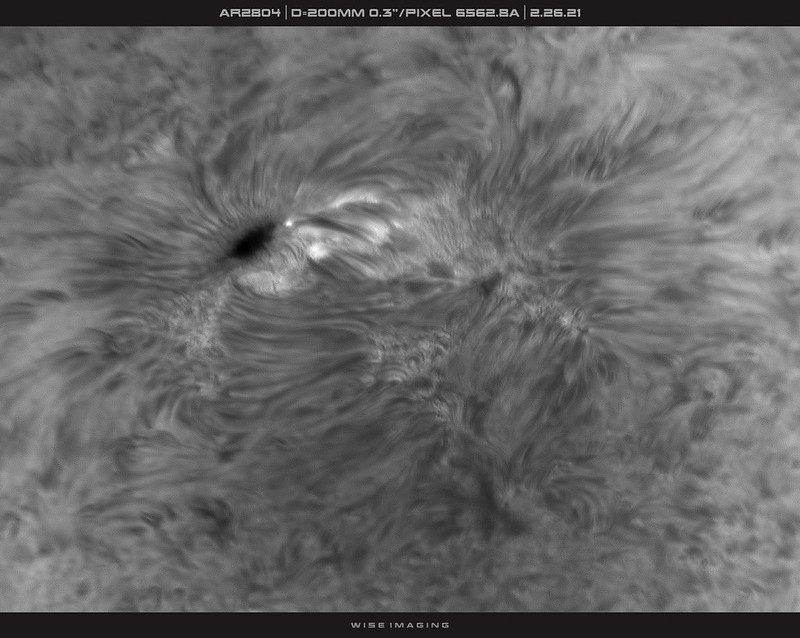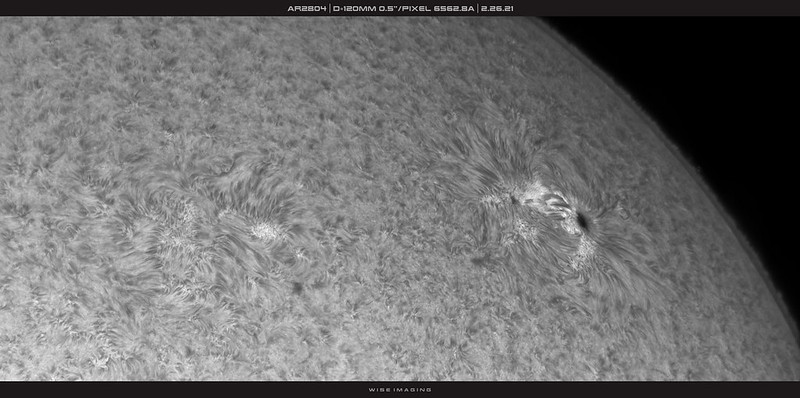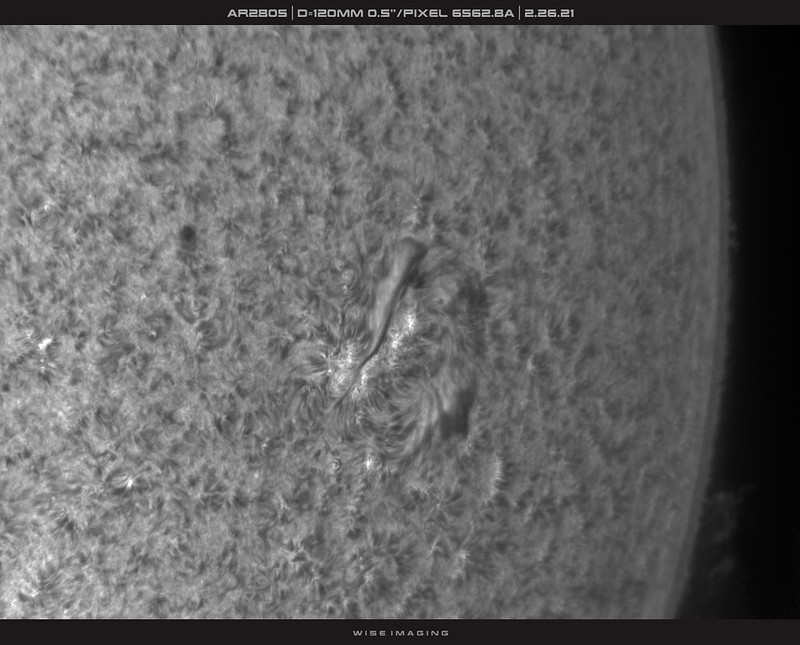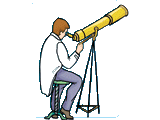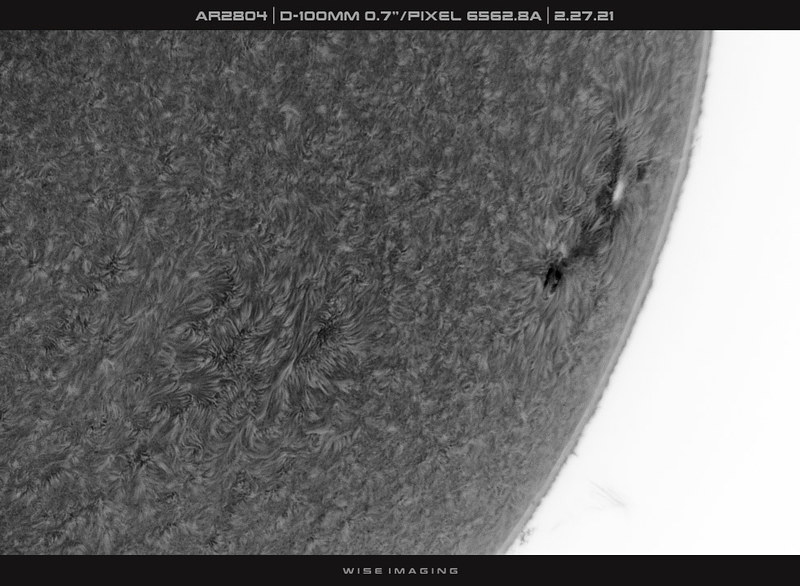H-Alpha wrote: ↑Fri Feb 26, 2021 9:02 pm
Perhaps you saw another post I sent, where I desperately ask help to find a 200mm D-ERF (from Valery/Aries or anywhere), because I dream to make my C8 a solar telescope (although I understand it will take a lot of time to get experience for using it correctly). Can you please answer any of the several questions I have regarding you 200mm photos and equipment:
1) Is this
https://www.baader-planetarium.com/en/b ... (red).html your Baader Red CCD-IR Block Filter (2nd D-ERF)?
2) What '(2nd D-ERF)' means? Is this filter a kind of D-ERF?
3) Any advice on where to find the PST Etalon + 10mm BF? (PST etalon is an old good one that can't be easily found today?)
4) Any advice on where to find a D-ERF 200mm?
5) I liked very much your first HR WL image. You wrote it is the result of 81 frames. How many in total taken? (and for how long the original video?)
6) Did you use some Barlow for the 200mm images and which one?
7) I suppose the light purple dots on the seeing plot, are the moments you took your photos. Do you start shooting when you see the seeing dropping low at the live plot?
Sorry for the many questions and many thanks for any answer you may provide. It will help me a lot to make a few more steps towards my dream to make photos that will approach a bit the quality of yours one day! :-)
Alexandros
Hi,
You can get a large D-ERF from several places including:
Altair Astro
AiryLabs
Baader
Beloptik
(Altair astro will be producing HA/CaK dual band D-ERFs soon this year)
Up front, just know, there's no magic bullet for equipment, high res requires excellent seeing conditions. You will hear and read lots of anecdotal gut stuff, but the bottom line is you can only image to whatever your atmospheric seeing conditions are. So unless you have an idea of what your common day time seeing conditions are when you're actually available to image on a given day, you're only able to get to the resolution of that seeing that moment of that day. I highly recommend not trying to jump to an 8 inch or bigger aperture for solar. I recommend instead you get a firm metric on what your local seeing is before you ever consider venturing past 4 inch apertures frankly. But instead of just guessing at things, I would recommend you get data or metrics and measure your seeing (be it via imaging often at the best times of day you can for seeing; or with a scintillation monitor). No matter what anyone tells you, the bottom line is that seeing is what you're limited to, if your seeing is poor, the resolution will be poor. I just warn heavily on this because lots of people want to get into high res imaging with bigger apertures, but do not have seeing conditions to support it. Work out your seeing limits first.
To your questions:
1) Yes, the basic Baader Red CCD-IR block filter is my primary D-ERF on my refractors and handles up to 150mm aperture with refractors and is all you need for a D-ERF for solar with red wavelengths. I use the same thing with Blue for CaK, 395nm and all that. I use them as secondary D-ERFs with larger apertures (8") to complete the blocking of thermal energy.
2) With a large aperture, I employ two DERF's, one is primary (the first one, full aperture, in front of the optics) and the second one in the focuser, before my narrowband filters, to further grind down thermal energy. The two combined will drop thermal load heavily on big apertures.
3) A good PST etalon is about as rare as it gets. I don't recommend it. If you happen upon one, that's different. I went through 3 PST etalons before getting a good one, and it's a pre-Meade one with high finesse. I got lucky. Most PST etalons are bad. Just like most Quark's are pretty poor. If you want good quality you have to pay for it. Otherwise, you can spend a fortune trying to get lucky on entry level low quality stuff just seeing if you get lucky (gamble). I don't recommend doing all that. But before getting all into this, I would recommend you focus on what your seeing conditions are first, so that you know what your limits are first, and go from there.
4) See above; I would explore Airlabs and Altair Astro first.
5) I was imaging at 170 FPS with a 290MM sensor, 30 second intervals, so 5,100 frames every 30 seconds. I do this back to back for a few minutes to an internal SSD drive (1TB). I then look at my seeing conditions (see my graphs) to see when the best seeing occurs and those files that occurred during that time frame are the ones I process.
6) I try to avoid using barlows; none of the above were done with barlows. I prefer to use native focal lengths and will mask apertures to make the focal ratio of my need. Both instruments operated at F10 above, because F10 critically samples 656nm wavelength on 2.9um pixels. So my HA and photoshpere imaging on both instruments on the 2.9um pixels of my 290MM sensor critically sample. My 200mm F10 SCT is natively F10, my 150mm F8 refractor has an aperture mask to take it to 120mm F10.
7) I highlight my best seeing spikes in the graph to show what my seeing was when I made these images. I do not trigger with SSM. I just record the graph for data purposes. I use the time instead to know which files probably correlate with that seeing on the graph and go from there. Really good seeing happens briefly. I image at 170 FPS so that if my seeing spikes to 0.6~0.8 arc-seconds, it happened for 500ms, and so I've already got 85 frames recorded by the camera during that time period. So when it happens multiple times (such as in the graph), I have good odds of a lucky image where I can stack around 20~40 frames at least, and if it happened more than once, I can stack easily double that, or more. This is lucky imaging.
Happy to help.
Again though, before even thinking about purchasing into this stuff, I recommend you get a very firm idea of your atmospheric seeing conditions when you actually will be available to image. Going to 8" or bigger apertures in red wavelengths needs 0.8 arc-seconds seeing conditions, to even consider it. This is not common at all. I would instead suggest you focus on 4 inch to 6 inch refractor options, so that your seeing needs are only 1.65 arc-seconds to 1 arc-seconds, which is still incredible seeing conditions in reality. It has nothing to do with technique, experience, etc, it has 100% everything to do with simply having the atmospheric seeing conditions to be able to do this.
Personally, if I were to do it all over again, after having done all this and learned a lot from doing it and from the good folks around these forums, I would simply build a good 150mm F10 refractor and get a good dual pass D-ERF for that size and call it a day with that.
Very best,





